You can attract beautiful butterflies with bright flowers and high-pollen plants. You can tell that you have a healthy garden when pollinators are present.
Living in Zone 4 means that your plants must withstand average low temperatures between -30 and -20 degrees Fahrenheit. These low temperatures may make you think you can't get very many plants that will bring in butterflies. However, this isn't true! There are many great kinds of plants suitable for butterflies in this zone! We've done the research and can tell you all about this kind of flora.

Butterfly-Attracting Plants For Zone 4
1. Dwarf Serviceberry (Amelanchier spicata/stolonifera)
The dwarf serviceberry is a deciduous shrub that typically grows between three and five feet tall. They are fairly easy to care for and can adapt to various soils. However, they prefer well-drained, acidic soils in areas with full sun to partial shade.
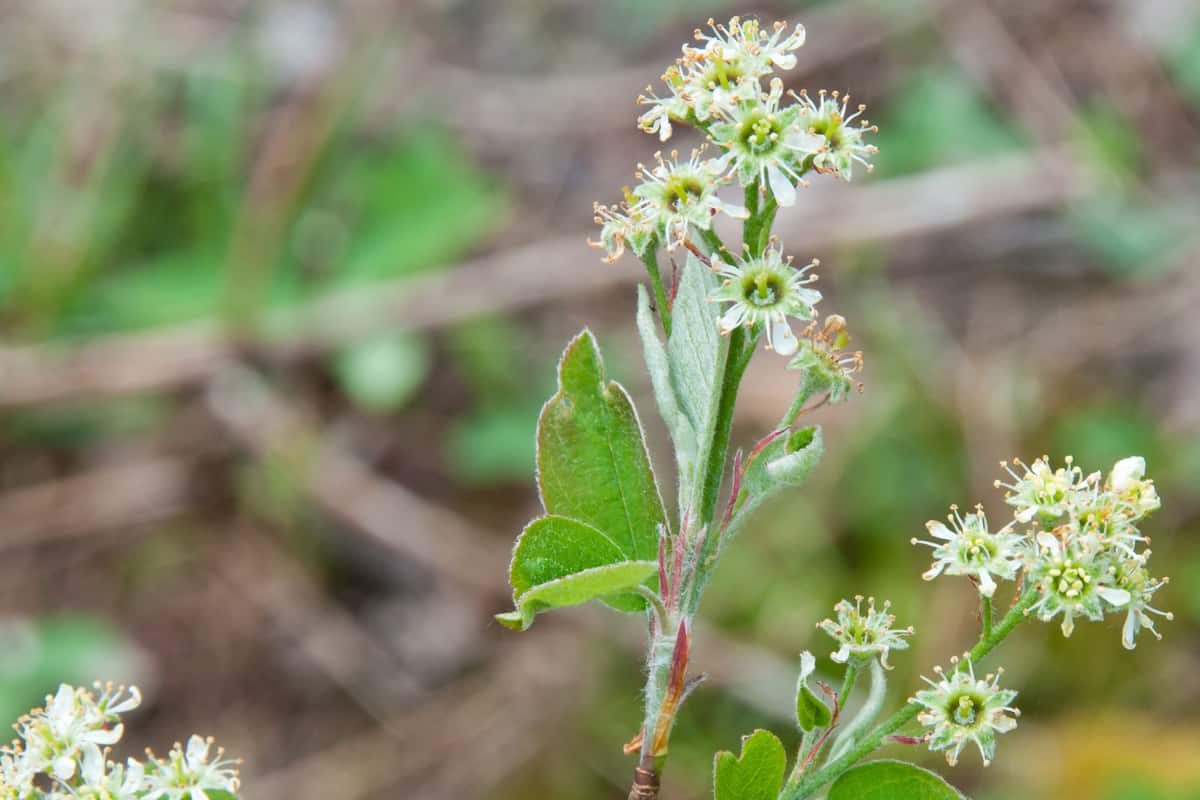
You can find showy white flowers in spring from March until May. Dwarf serviceberries have cup-shaped flowers with four to five petals. These flowers are ideal for attracting butterflies and other pollinators. Then, in late fall, you can find black, purple, and red fruits. These fruits are great for attracting birds.
Once established, dwarf serviceberries are resistant to drought. Since these shrubs can grow densely, they are best suited as a hedge.
2. Common Sweetshrub (Calycanthus floridus)
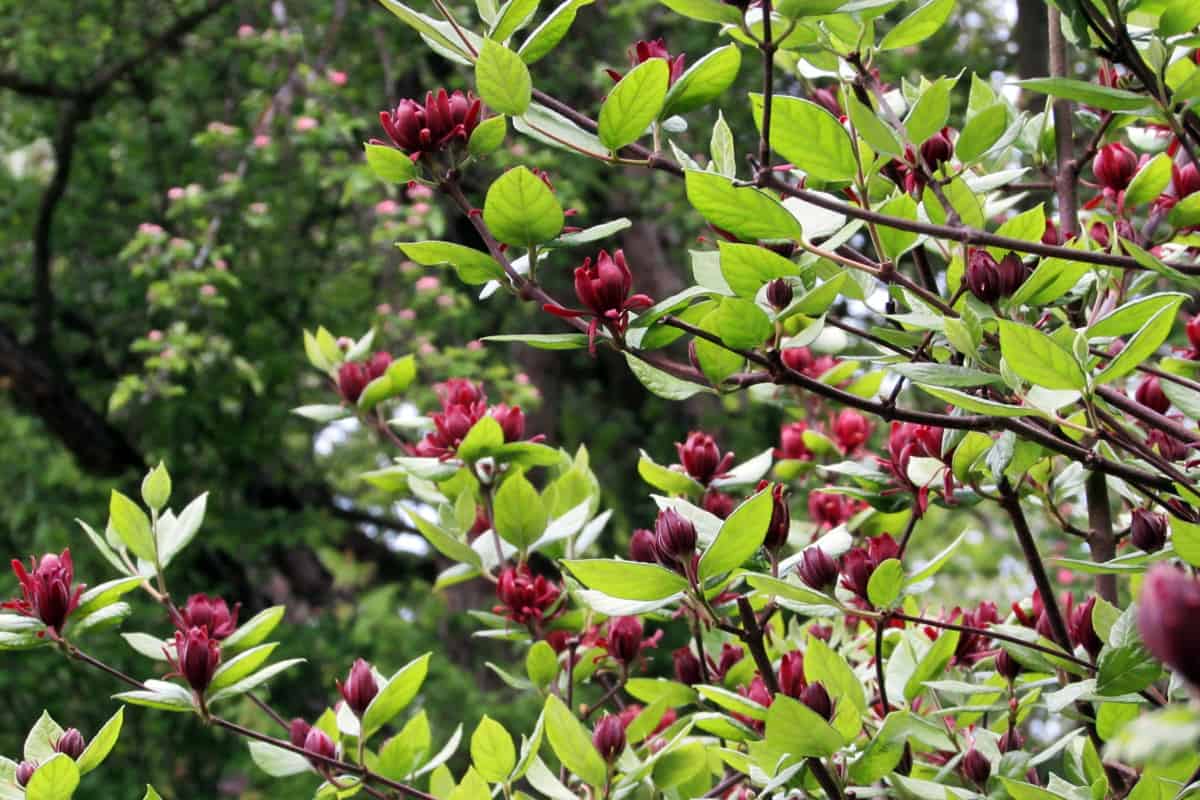
The sweetshrub plant is a deciduous shrub that can grow between six and 12 feet tall and wide. These plants grow at a medium rate and can be found naturally in areas with ample shade.
However, they can tolerate locations that get full sun to deep shade. The common sweetshrub prefers rich, loamy soil, although they can do well in various soil pH levels and textures.
You can see blooms before the leaves arrive, typically between April and May, although some plants will bloom through July.
Flowers for the common sweetshrub are fragrant and can have between seven and 20 petals. The fragrant blooms are very unique and can smell like a combination of pineapple, banana, and strawberry.
This plant is great for attracting butterflies, predatory insects, and other pollinators. The sweetshrub is great as a border, hedge, screen, and foundation plant.
3. Red-Barked Dogwood (Cornus alba)
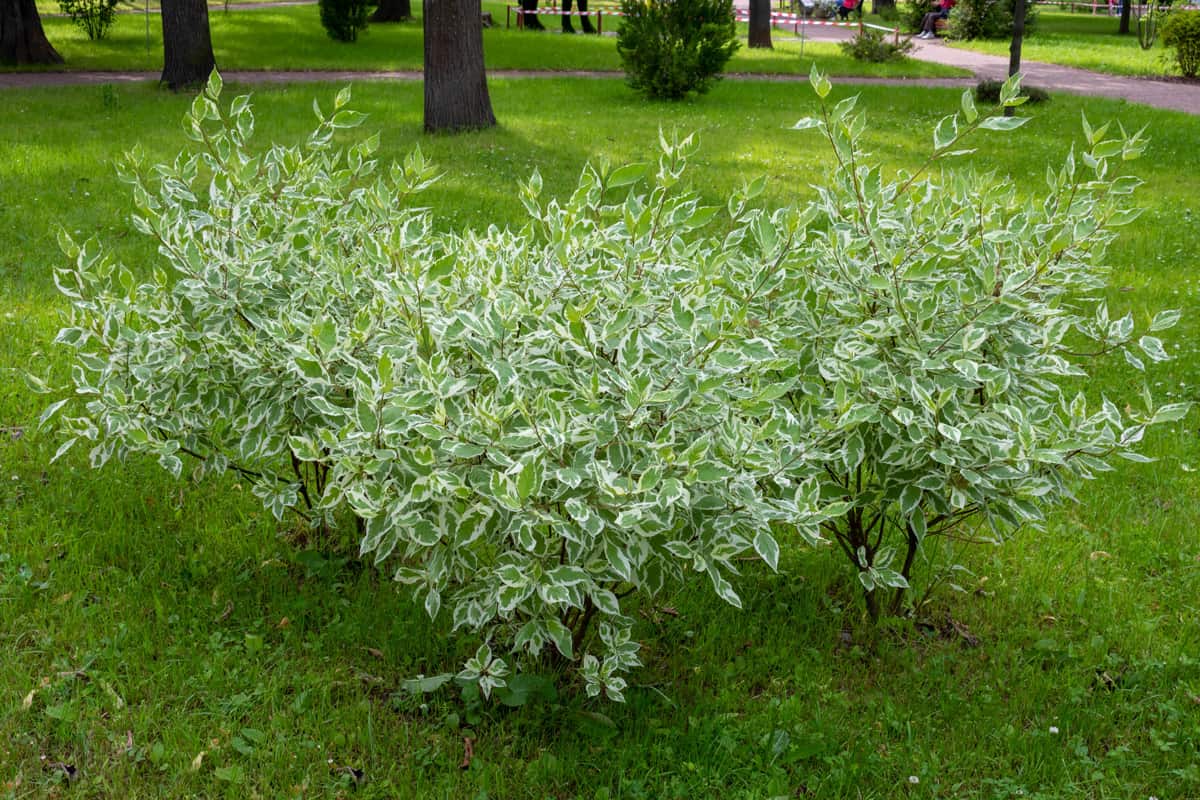
The red-barked dogwood can be grown as a shrub or a small tree. It can grow between eight and 10 feet tall and wide. You should plant red-barked dogwood in well-drained soil that receives full to partial sunlight.
However, this rapidly growing plant can tolerate a wide range of soil types. These soils include clay, loam, and sand. Regarding drainage, red-barked dogwood can withstand occasionally dry and wet soil.
Flowers for this plant can be found from May until June. Blooms are typically yellow or white, with white being the more common color.
The flowers are ideal for attracting butterflies and other pollinators such as bees. Red-barked dogwood produces white drupe fruits that are good for bringing in birds and other small mammals.
Unfortunately, this dogwood is susceptible to various diseases. You should keep an eye on your plant for signs of leaf miners, scale, anthracnose, powdery mildew, and canker. Red-barked dogwoods can also be challenging to remove once established. So, you'll need to choose your location carefully.
4. English Lilac (Syringa vulgaris)
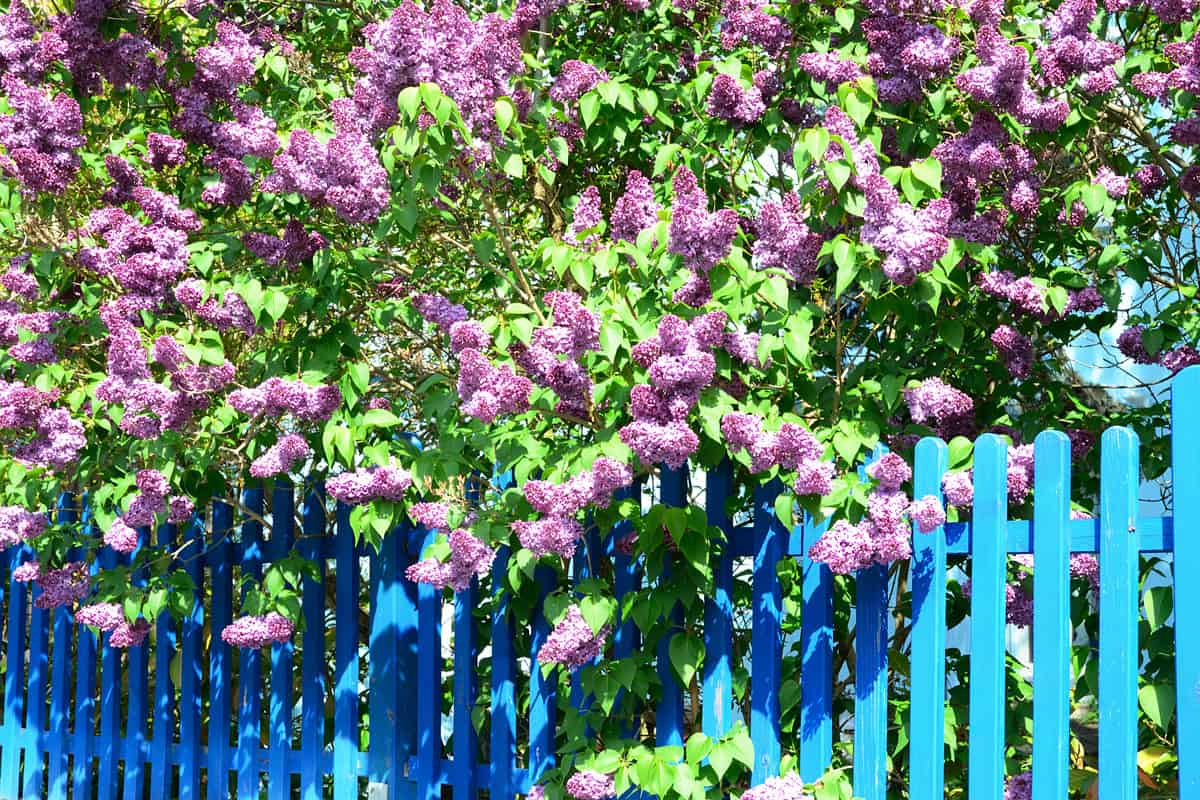
The English lilac is grown as a shrub or small tree. These plants have highly fragrant blooms in the spring, typically in May.
You should grow these shrubs in areas that receive full sun. If conditions are too shaded, they will not bloom. The English lilac also prefers slightly acidic to slightly alkaline soils with good drainage.
These blooms are typically seen in purple. However, there are also blue, cream, pink, and white flowers. The flowers attract butterflies, hummingbirds, bees, and moths.
The leaves are also frequently eaten by caterpillars of moths. Unfortunately, after the bloom season is over, this plant isn't very showy. It is also susceptible to diseases such as powdery mildew, blights, and leaf spots.
Take a look at this live plant on Amazon.
5. Wild Garlic (Allium canadense)

Wild garlic plants are bulbous perennials that form grass-like clumps of leaves with star-shaped flowers. These plants can grow up to 18 inches are are considered weedy. They are frequently found in disturbed areas, meadows, thickets, fields, forests, and lawns.
The flowers are pink, purple, or white and are more common when planted in sunny locations. Wild garlic blooms are great for attracting butterflies, bees, and hummingbirds. Wild turkeys also eat the plant's bulb. However, you should be careful if you have pets. Every part of it is poisonous to dogs and cats.
6. Butterfly Weed (Asclepias tuberosa)
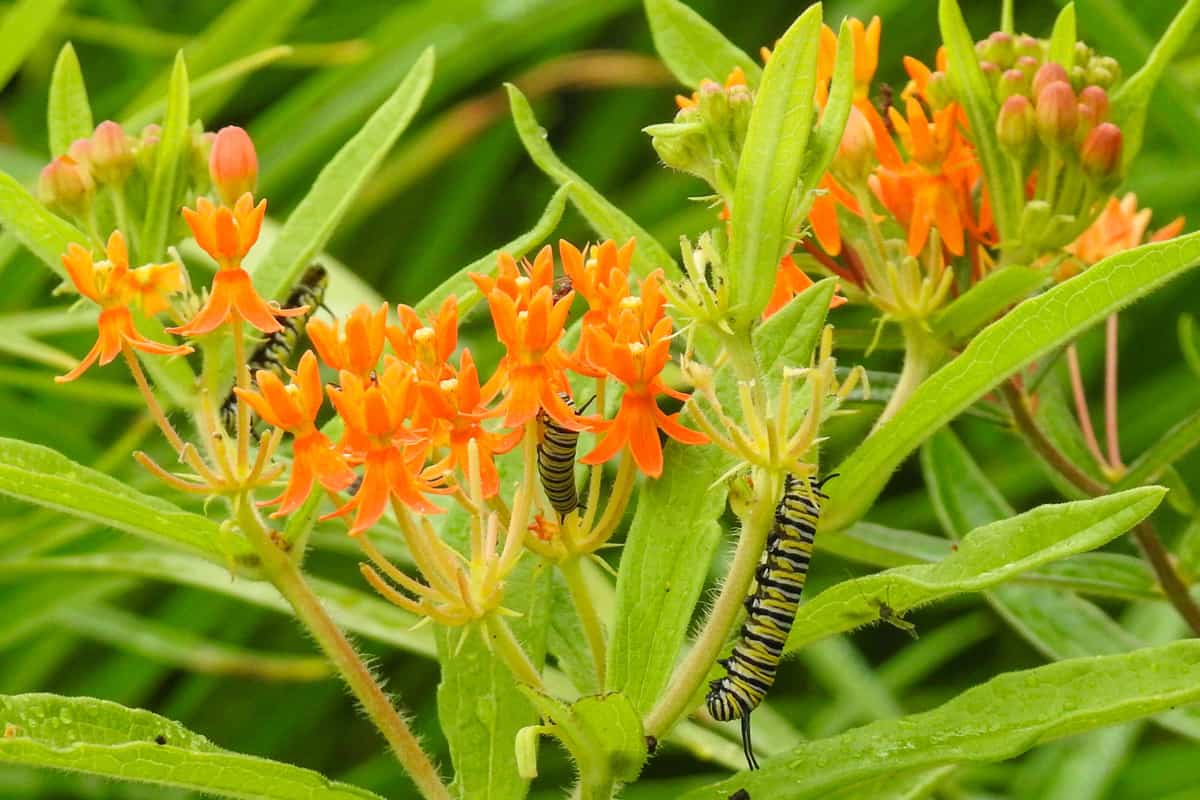
Butterfly weeds are herbaceous perennial wildflowers. They grow between one and two feet tall and have an erect habit. These plants are ideal for borders, mass plantings, and small groups.
You should grow these plants from seed, as they don't do well with transplanting. Mature plants will freely self-seed if the seed pods aren't removed.
You can find yellow, orange, and red blooms from May until August. You should deadhead flowers to extend the bloom season. The tubular flowers with four to five petals are great for attracting butterflies. In fact, the butterfly weed is a larval host plant for the monarch butterfly.
Check out these seeds on Amazon.
7. Eastern Ox-Eye (Heliopsis helianthoides)
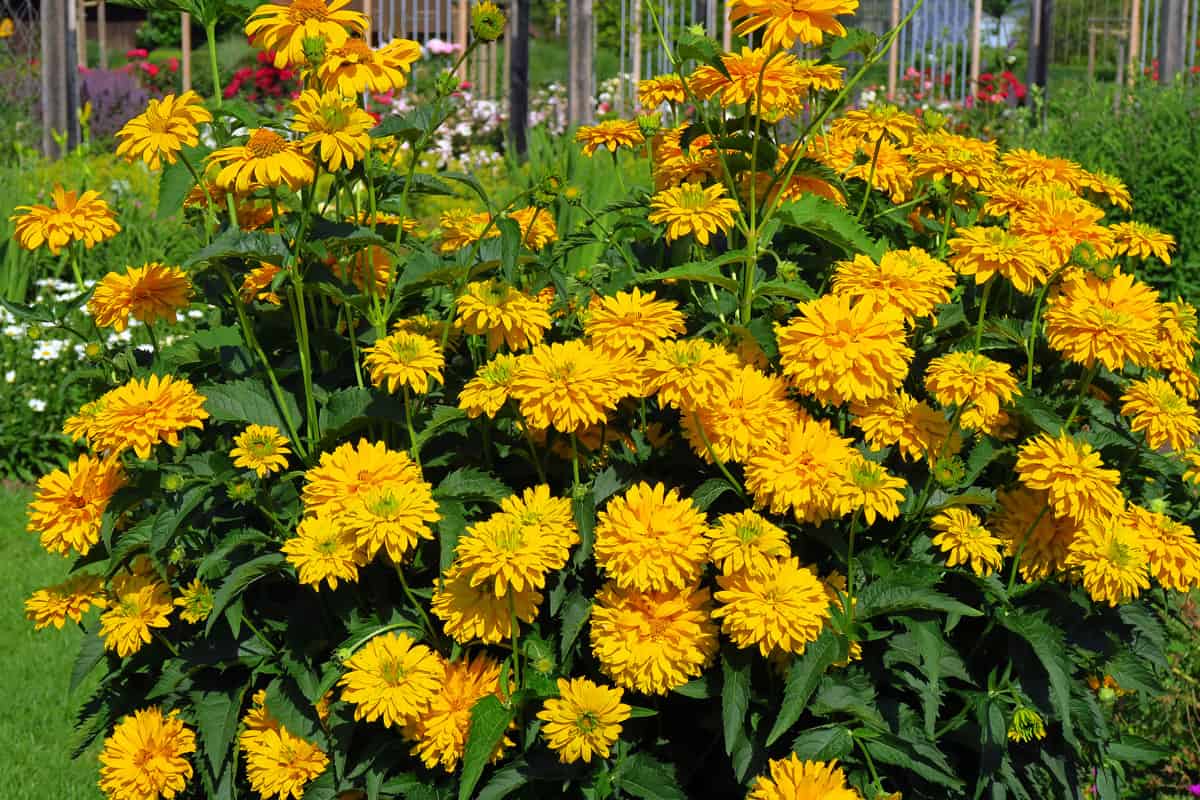
Eastern ox-eyes are perennial wildflowers with clumping and erect habits. These sunflowers look best when used in a mass planting.
They can grow up to six feet tall and four feet wide. You can easily grow them in locations with well-drained soil in full sun. However, they can tolerate a wide range of conditions. These include dry, clay, and poor soil.
The daisy-like flowers are brown, yellow, or orange. You can typically find blooms from May until October. These flowers are ideal for attracting bees, butterflies, and pollinators. Songbirds also frequently eat the seeds.
Are you looking for more sunflower-like plants? Check out this post: Flowers That Look Like Sunflowers [8 Types With Pictures]
8. Blazing Star (Liatris spicata)
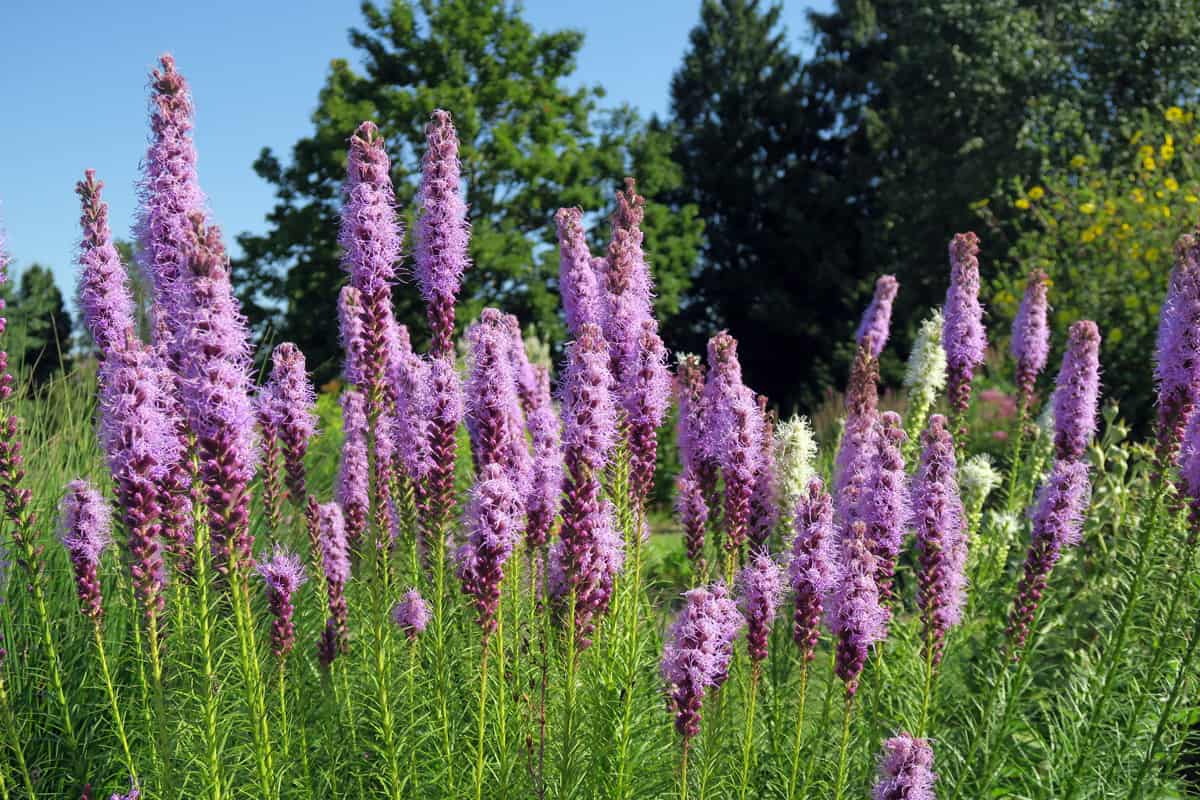
The blazing star is a perennial wildflower in the daisy family. These plants can grow up to six feet tall and have a clumping, erect habit. You can use these as border plants or for mass plantings. They prefer areas with full sun and fertile soil. However, you can grow them in poor soil.
You'll find blooms from July until August. Blazing stars have long, spiked flowers in shades of pink, purple, red, and white. The blooms will attract butterflies, bees, and hummingbirds.
Blazing stars are also good for other animals. The seeds are enjoyed by goldfinches, and the stems, flowers, and seeds are good for various moths.
9. Common Pear (Pyrus communis)
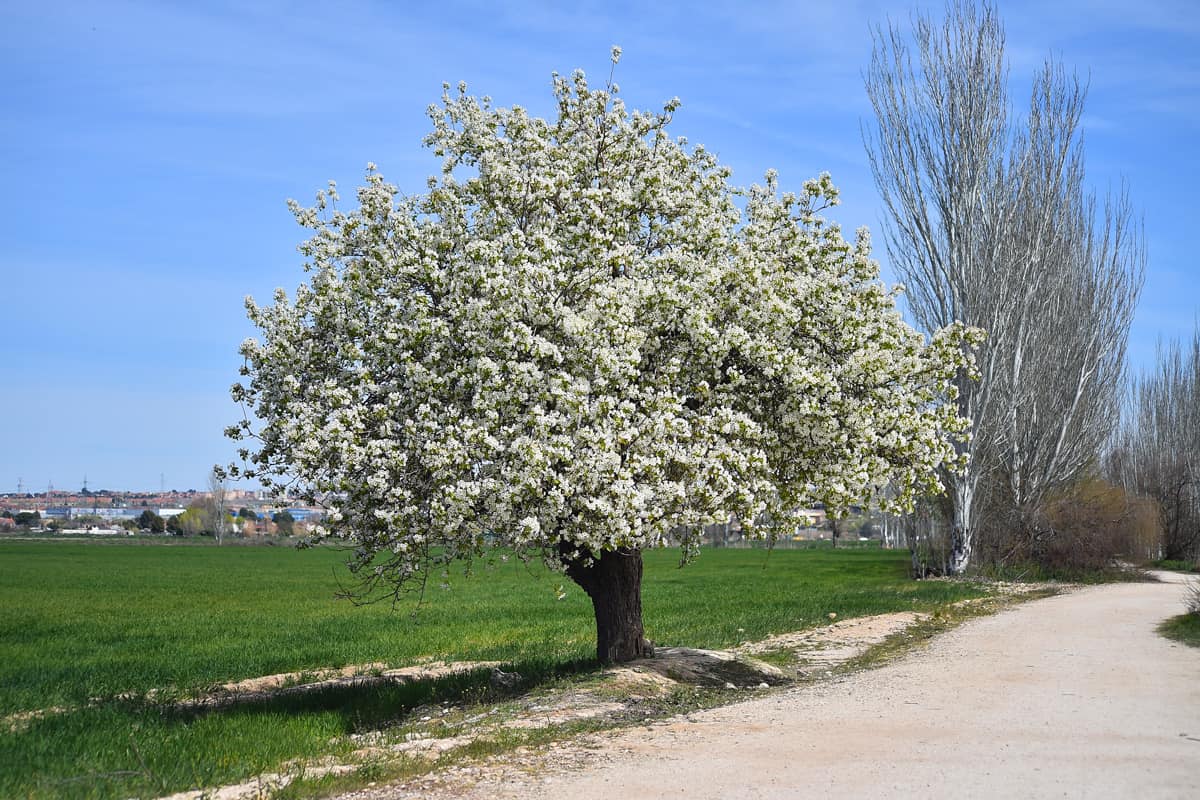
The common pear is a fruit tree with an erect and spreading habit. It typically grows between 40 and 50 feet tall and spreads between 25 and 35 feet. You should grow the common pear in areas with full sun and in well-drained, loamy soil. However, it is tolerant of clay soil.
These plants are most well known for their fruits. However, the yellow or white flowers are showy and great for attracting butterflies. You'll find the cup-shaped flowers in the spring, typically from March until April.
Keep in mind that these trees can be high maintenance. The common pear tree is susceptible to diseases like fireblight, anthracnose, and powdery mildew. They can also be bothered by pests.
10. Morning Glory (Ipomoea pandurata)
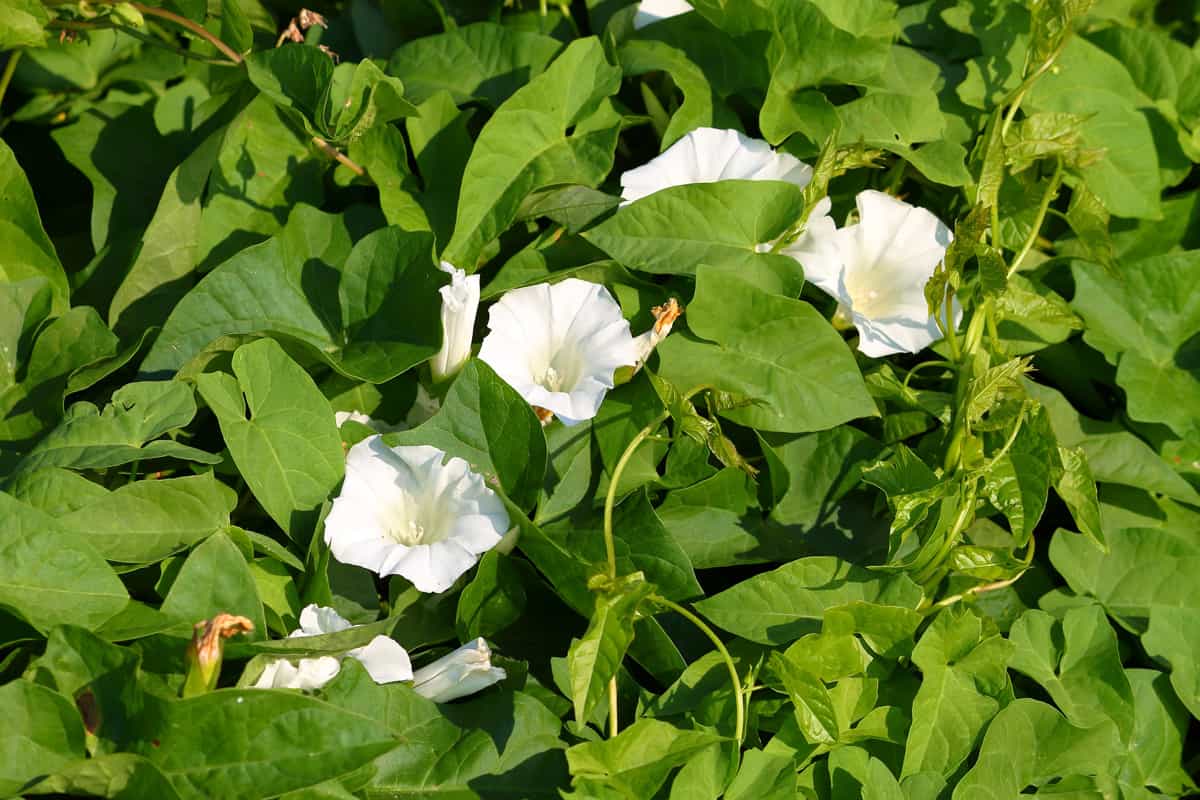
Morning glories are a perennial, deciduous vine that can grow as high as 30 feet. These plants do well in various soil textures. However, they prefer full sun to partial shade and well-drained soil. Once established, the morning glory is resistant to dry soil.
You can find purple, red, and white blooms from May until September. The funnel-shaped flowers are showy and good for attracting butterflies, hummingbirds, and bees. You should deadhead the flowers to help prevent the spread of seeds because this plant can become invasive.
Take a look at these seeds on Amazon.
11. Cliff Rose (Armeria maritima)
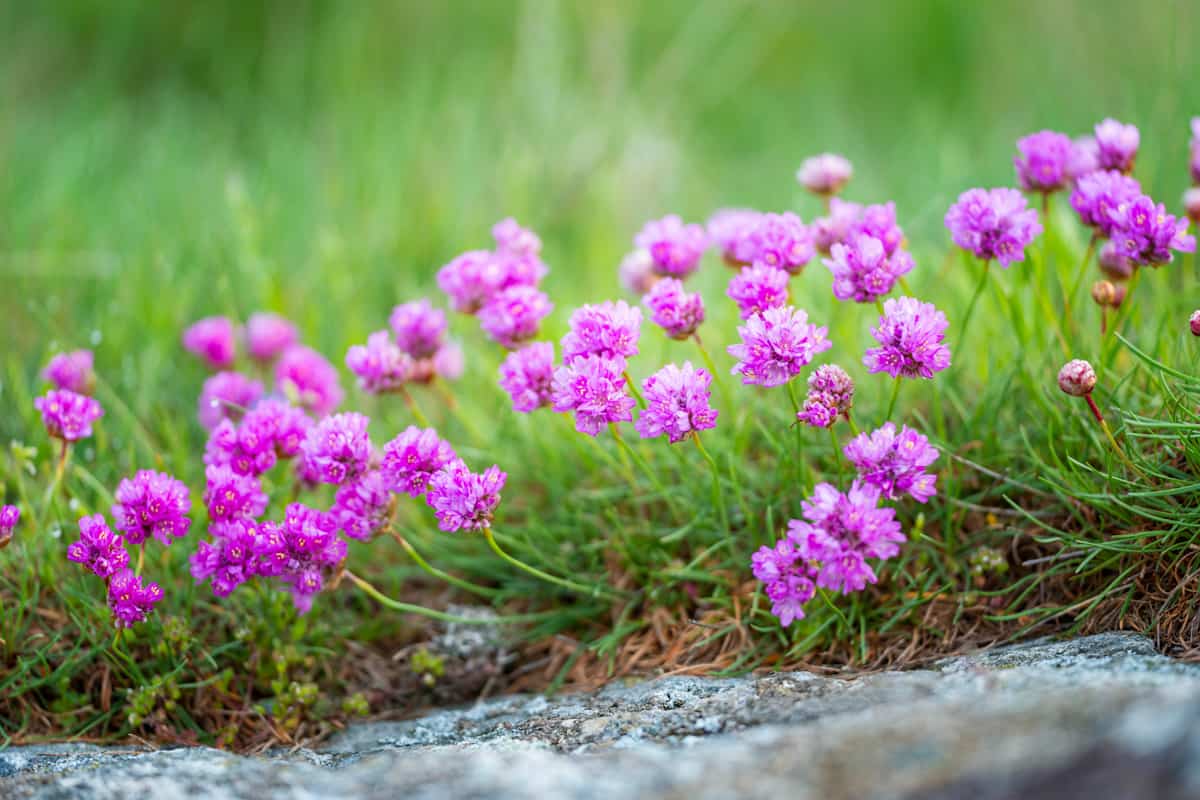
The cliff rose is a herbaceous perennial with a clumping and spreading habit. These plants can grow up to a foot tall. You can find cliff roses naturally along the coastline.
They are resistant to salt spray and dry soil. However, they require perfect soil drainage. Other plants can also overtake them. So, it will be essential to protect them or plant them in containers.
These plants have pink and white blooms from April until May. The showy flowers are great for attracting butterflies.
In Closing
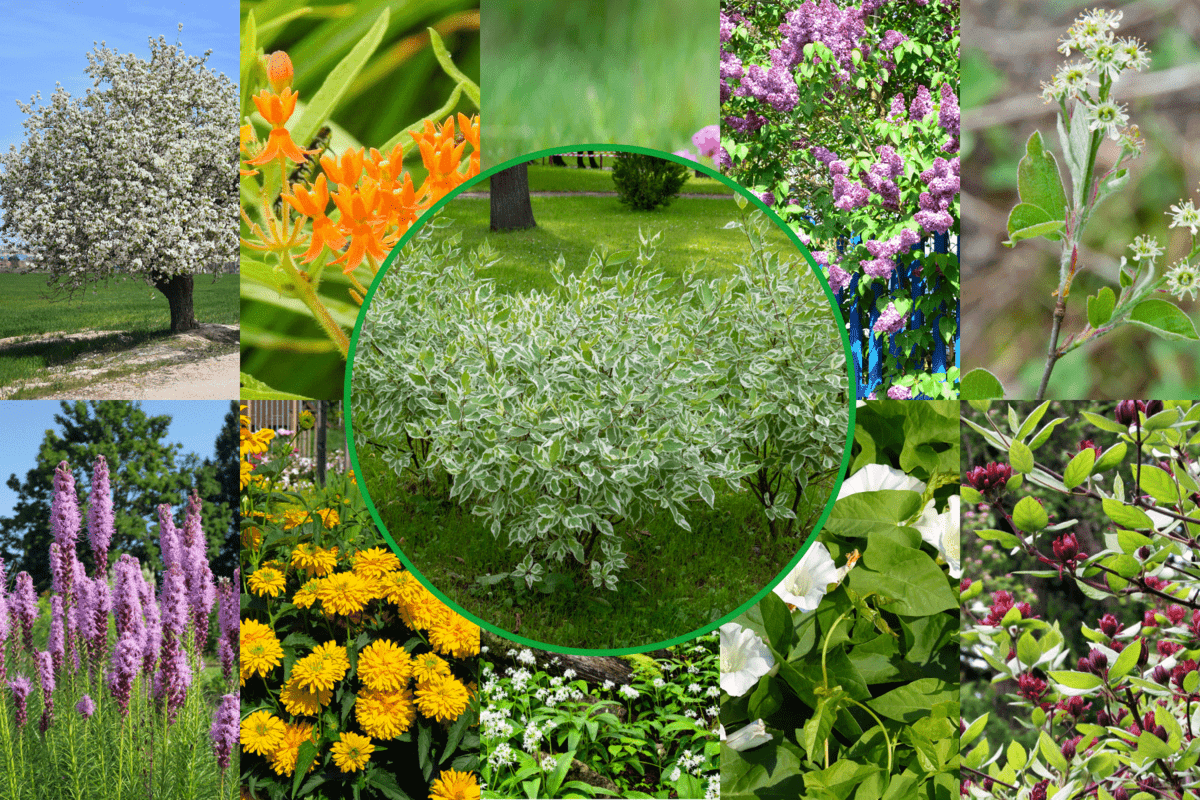
Many different types of plants can attract butterflies in USDA Zone 4. You should ensure that your plant can tolerate the soil and light conditions in the area you're planting in before selecting any flora. This will ensure you have the highest quality plants for your garden.
Need more? Check out this post:



